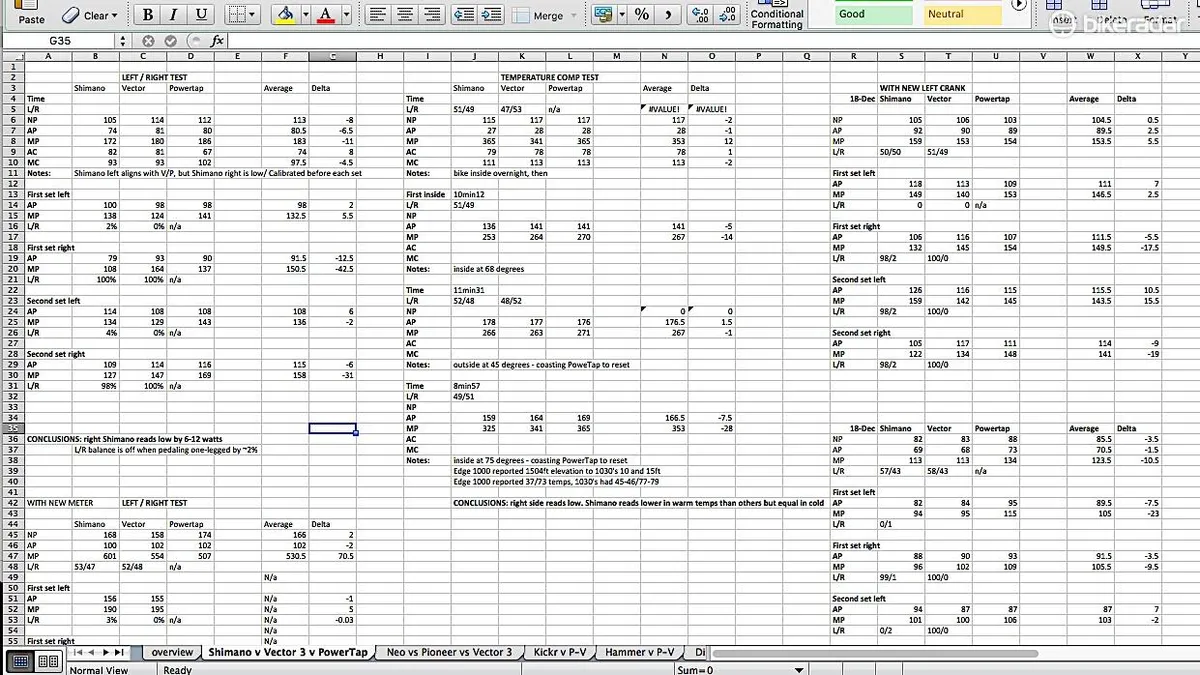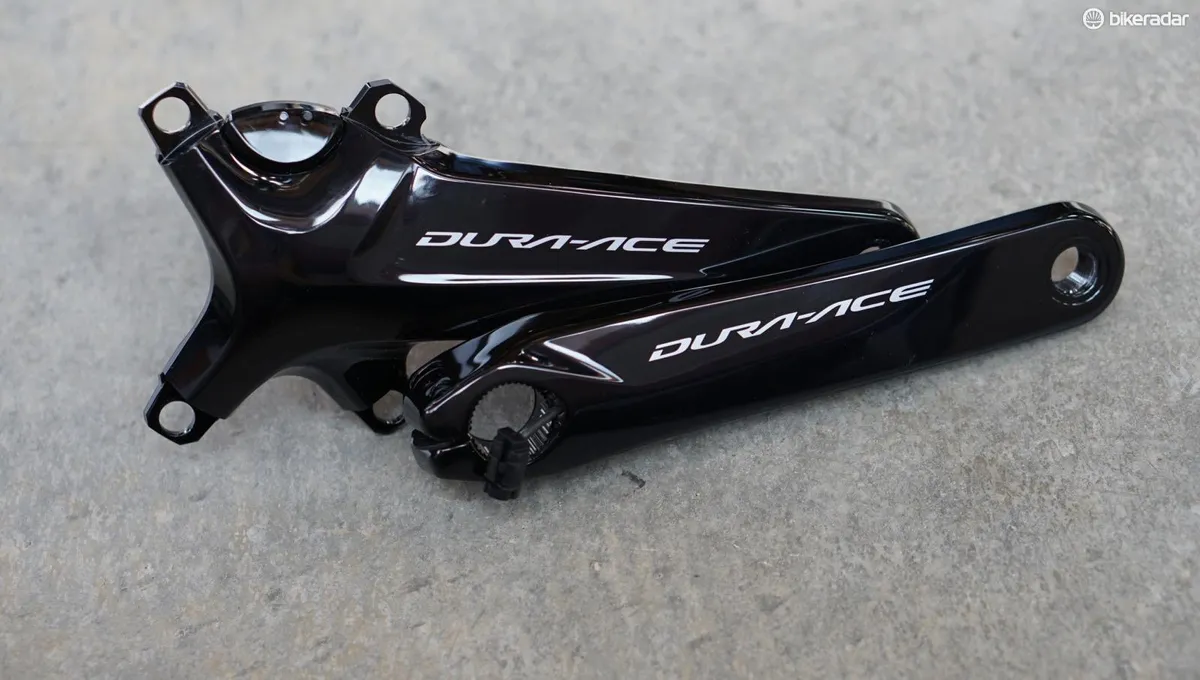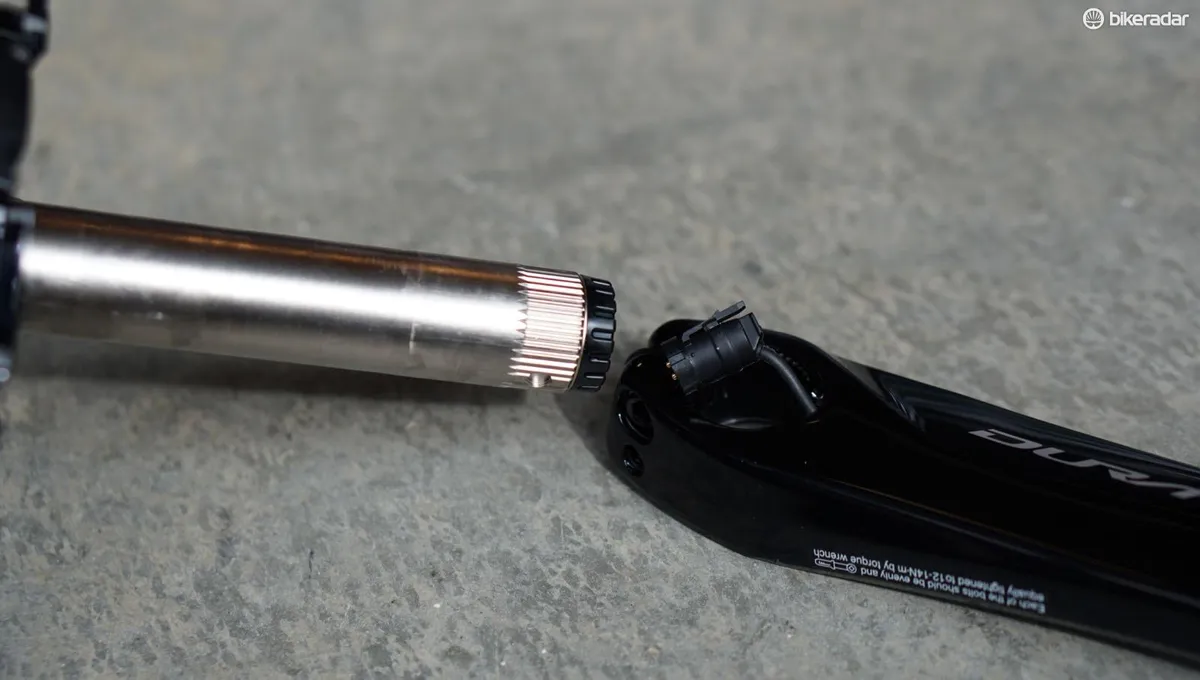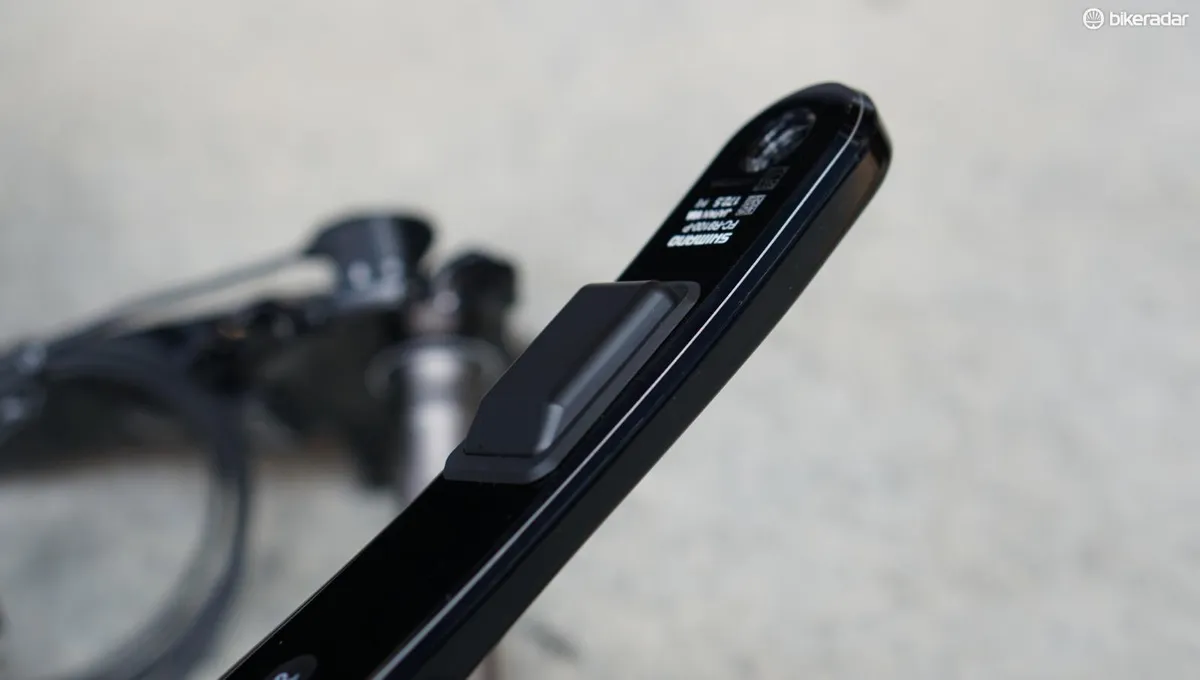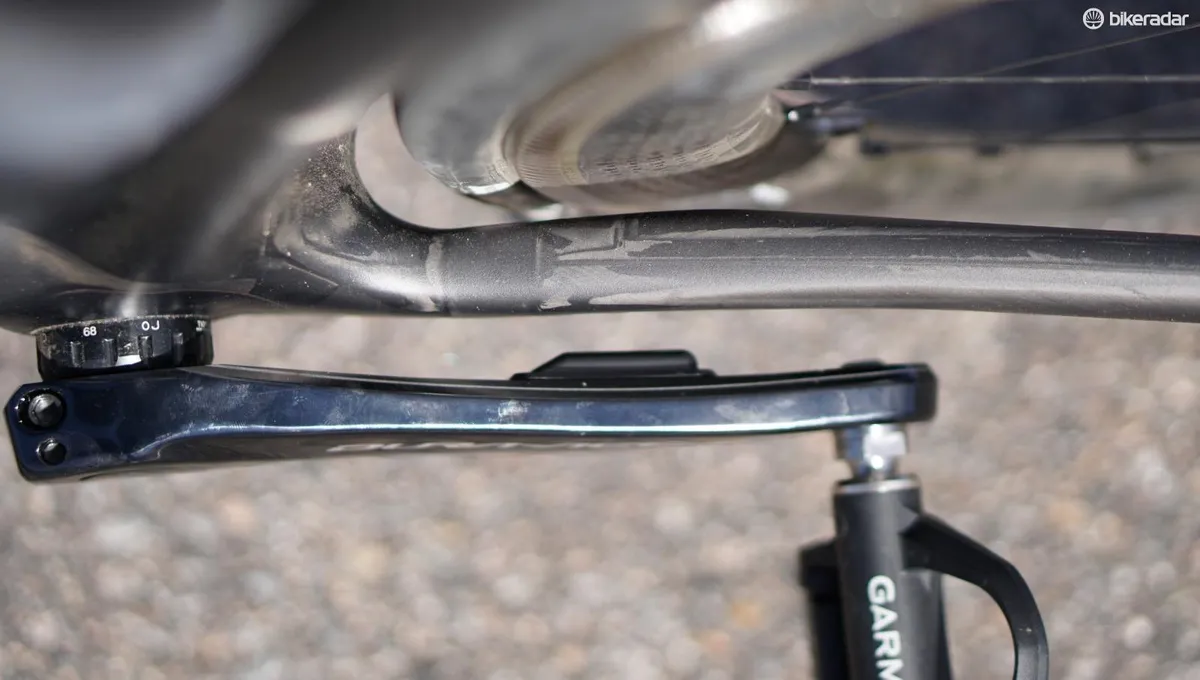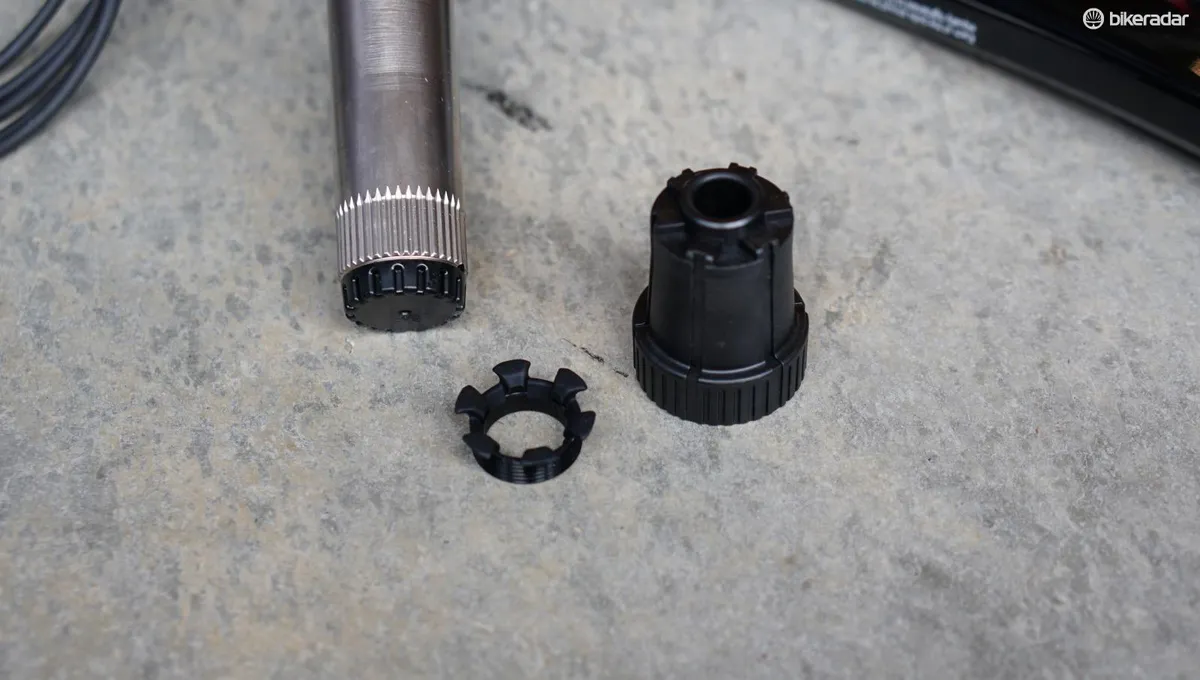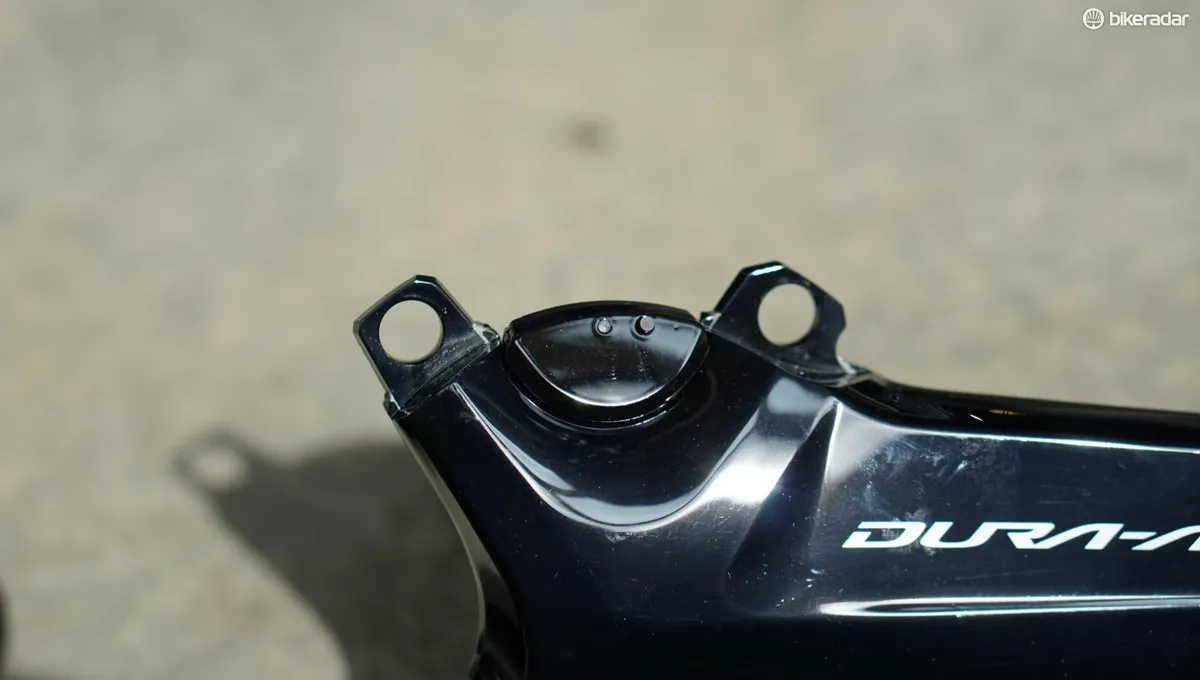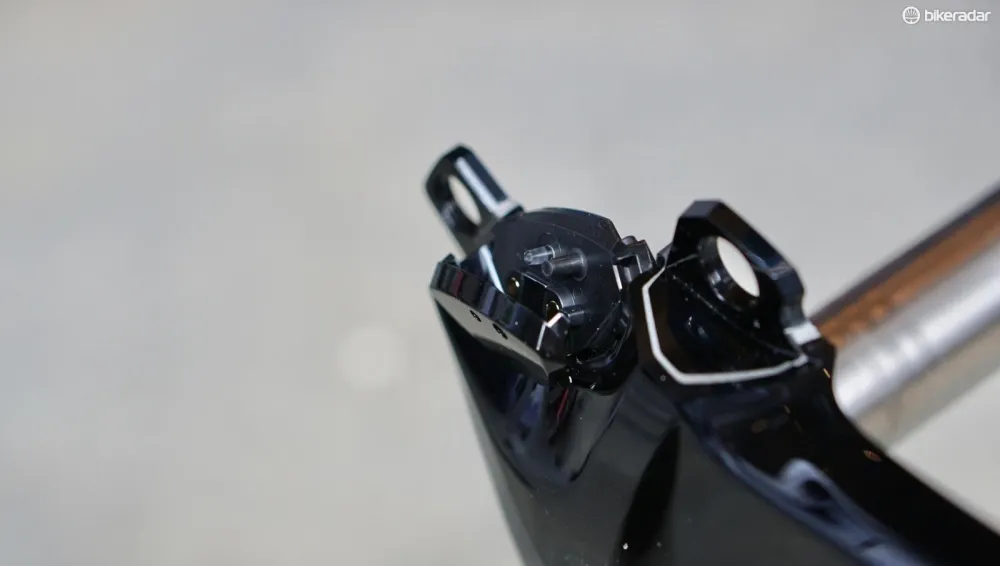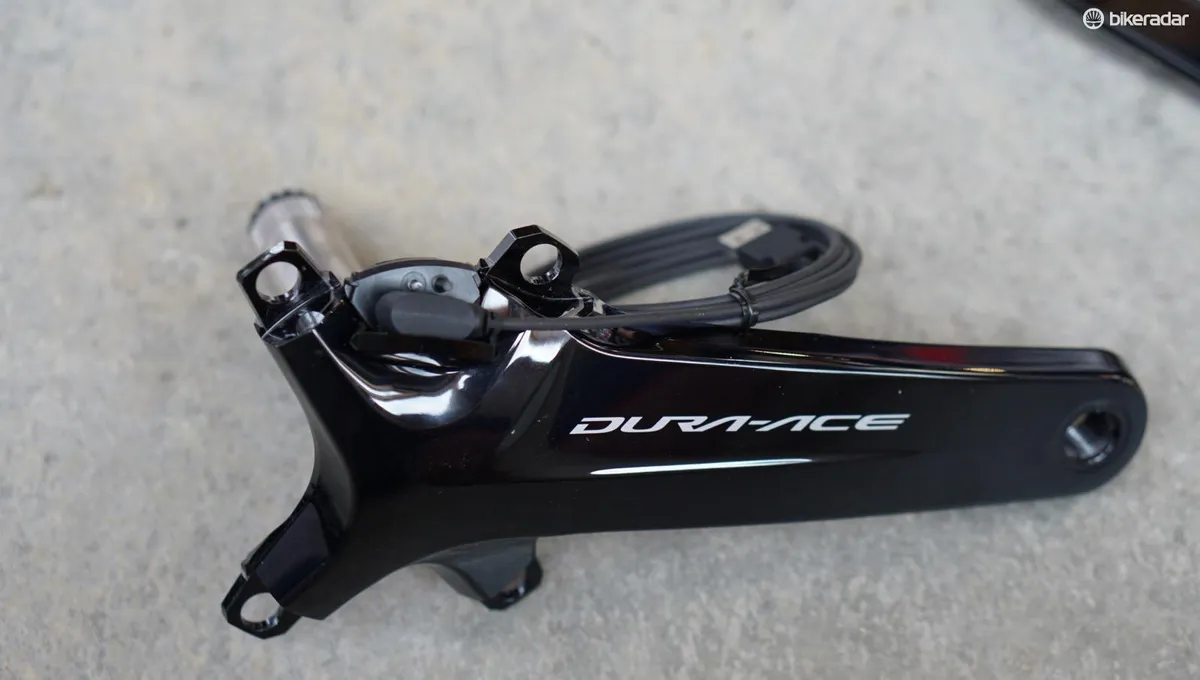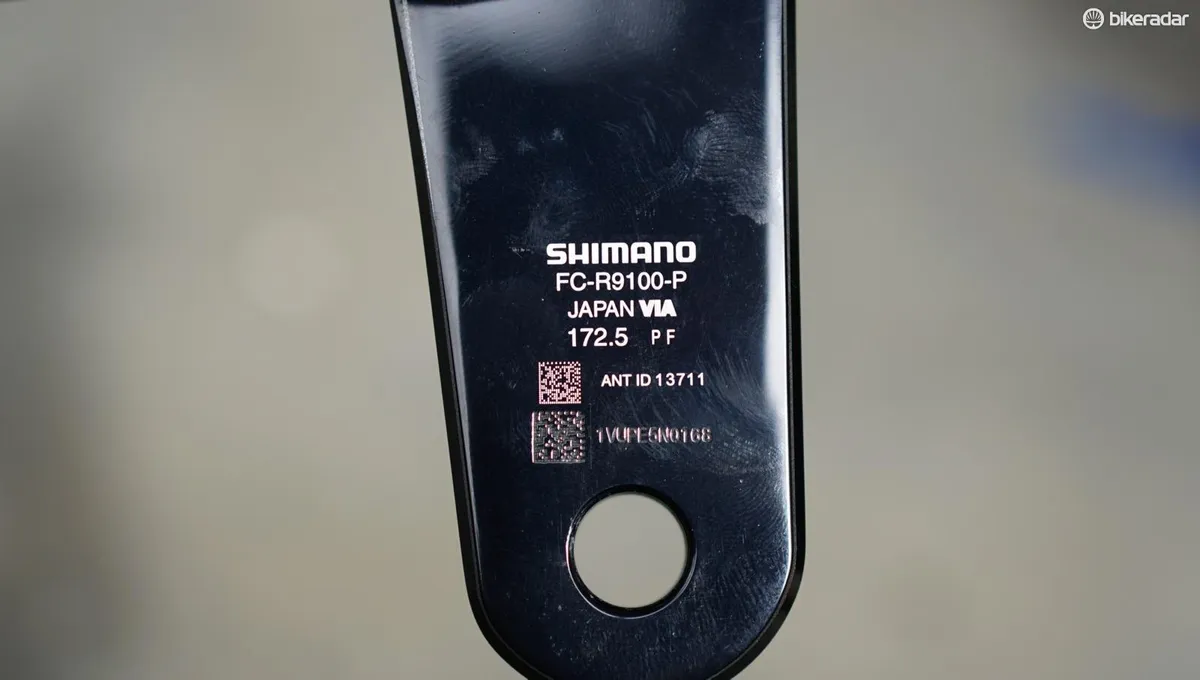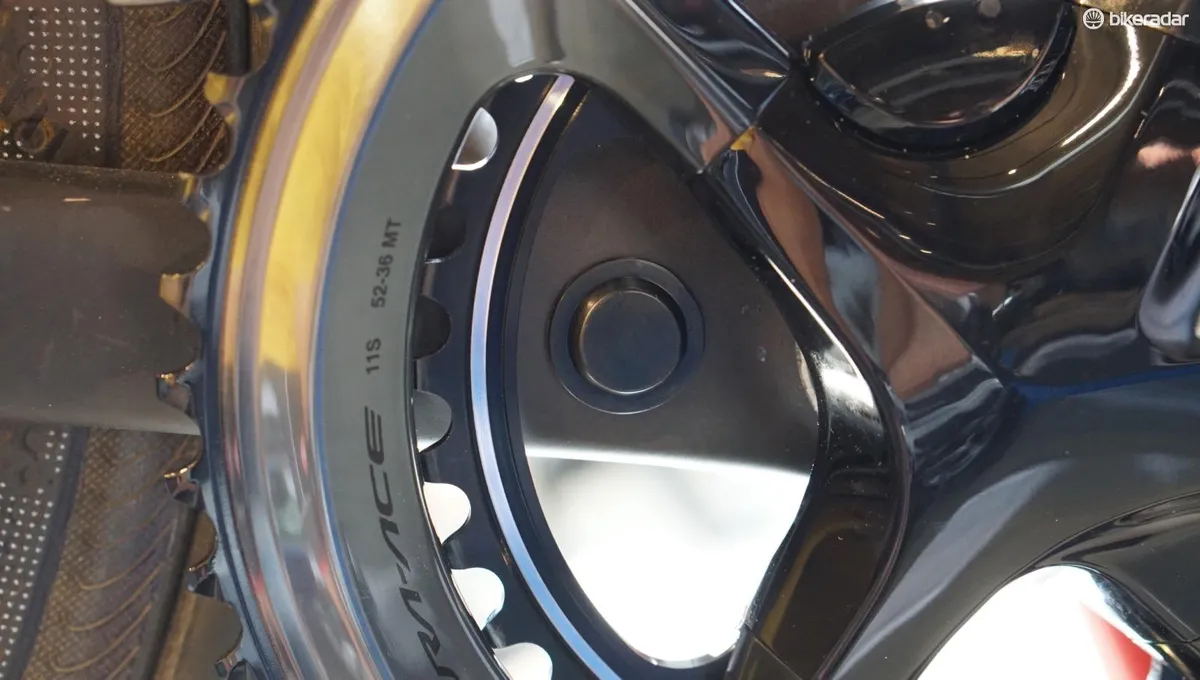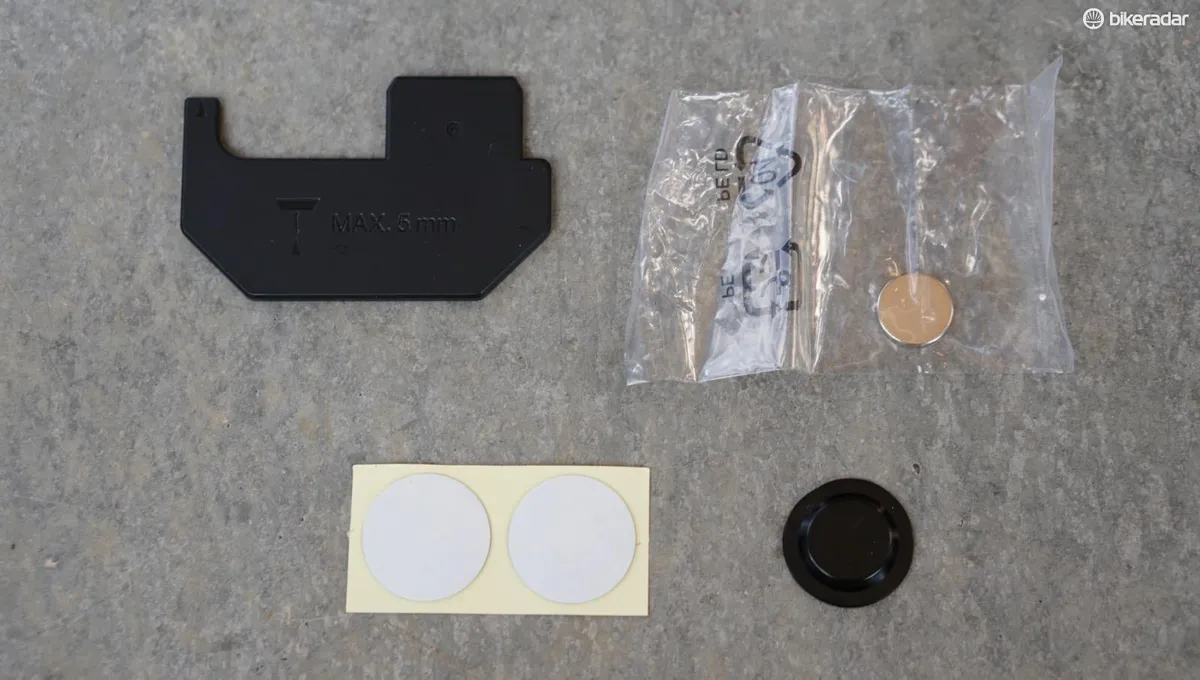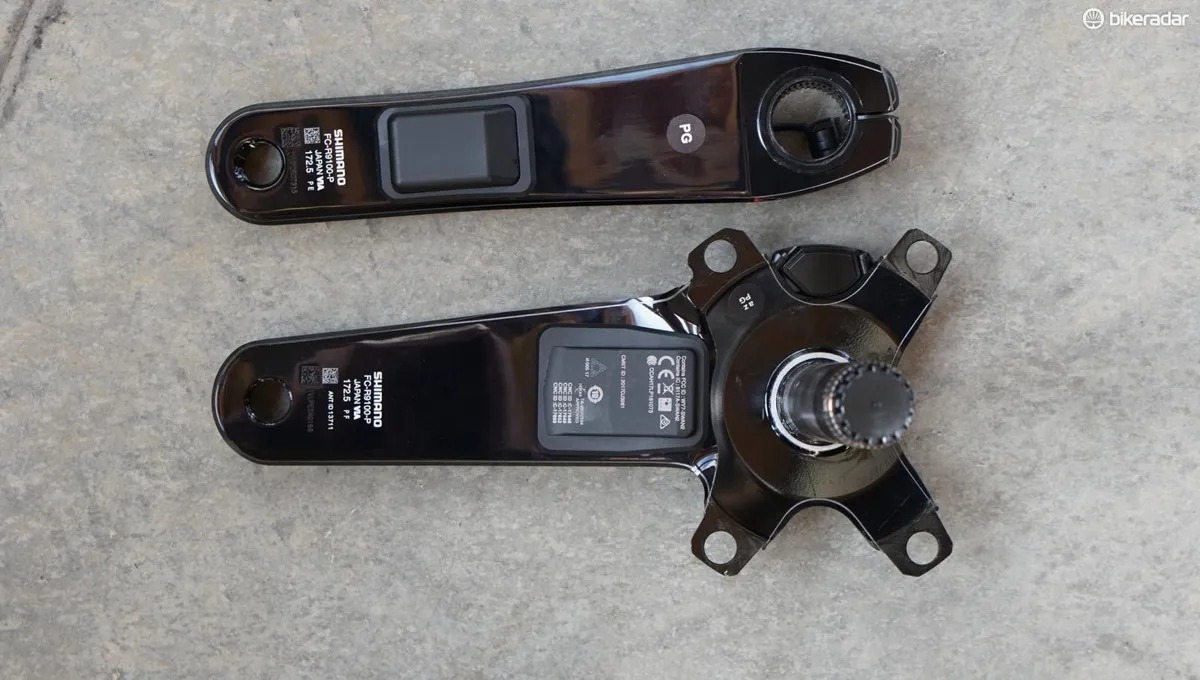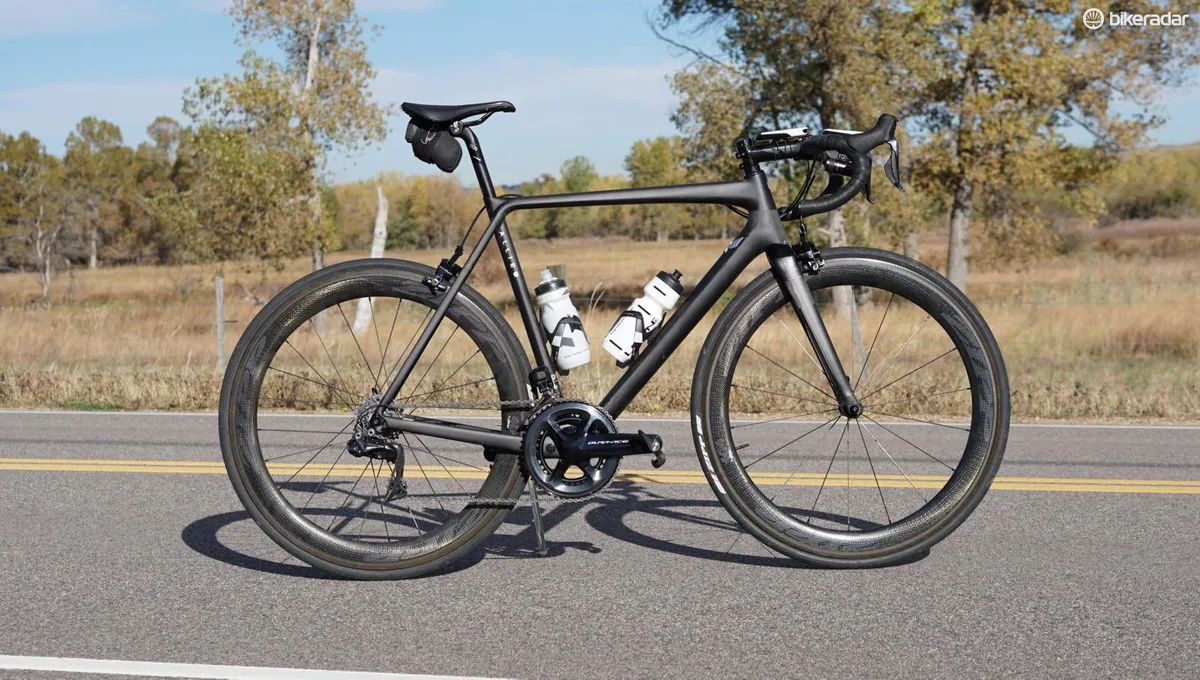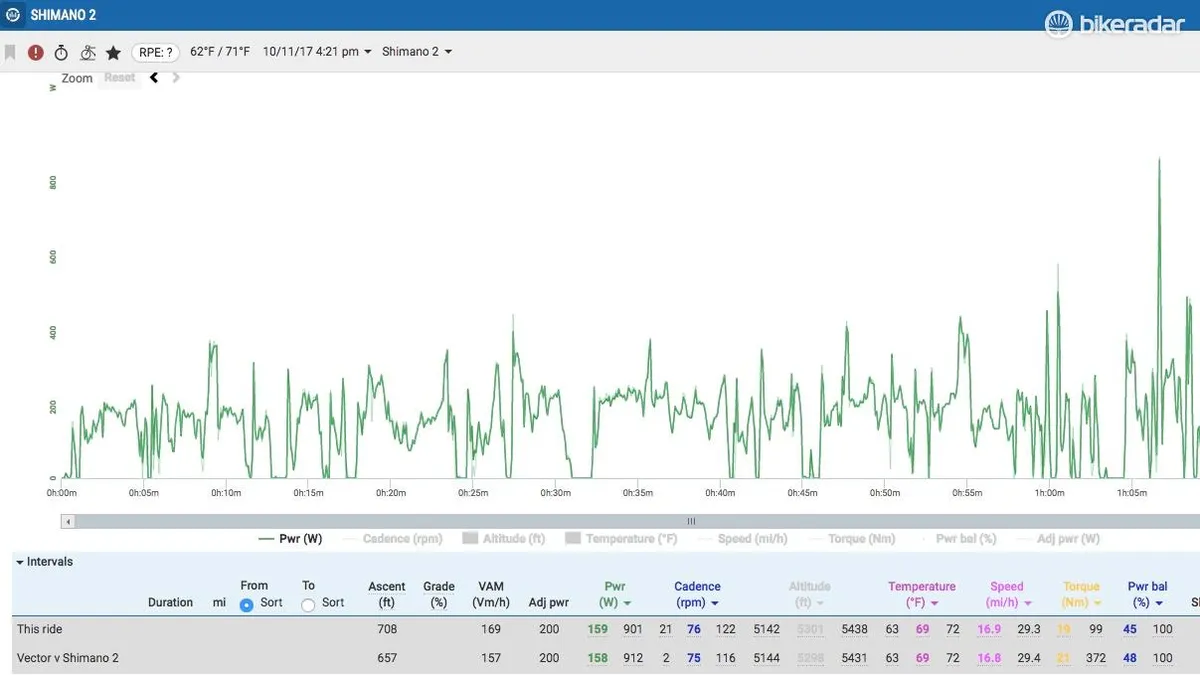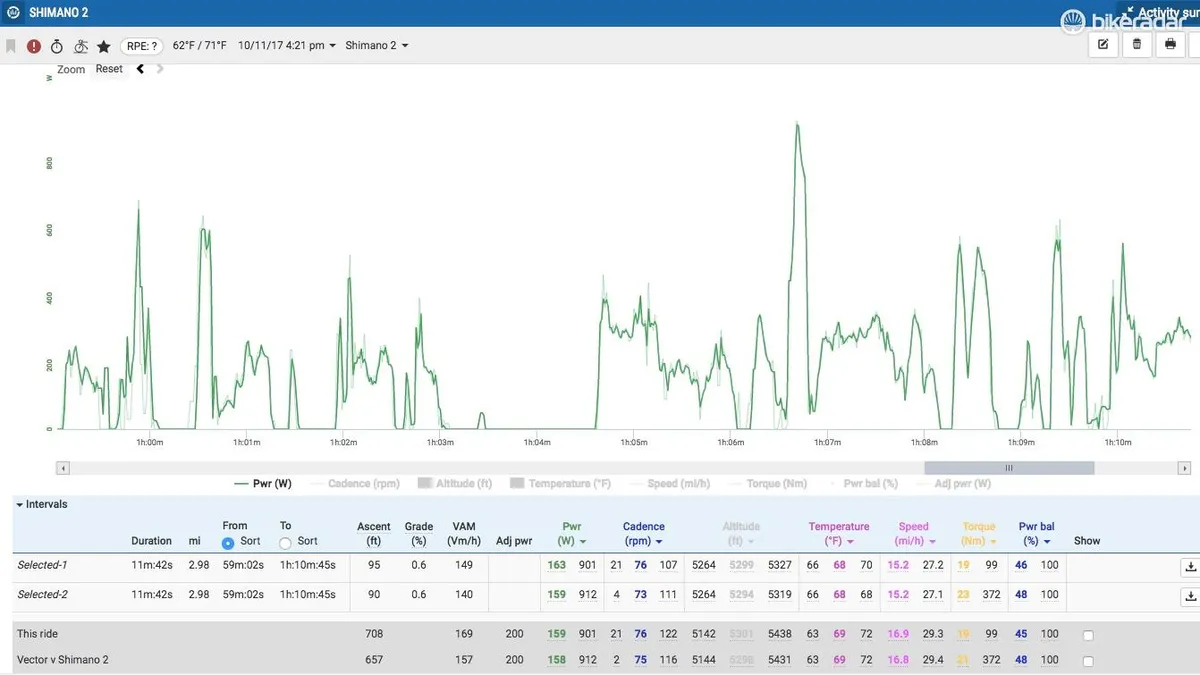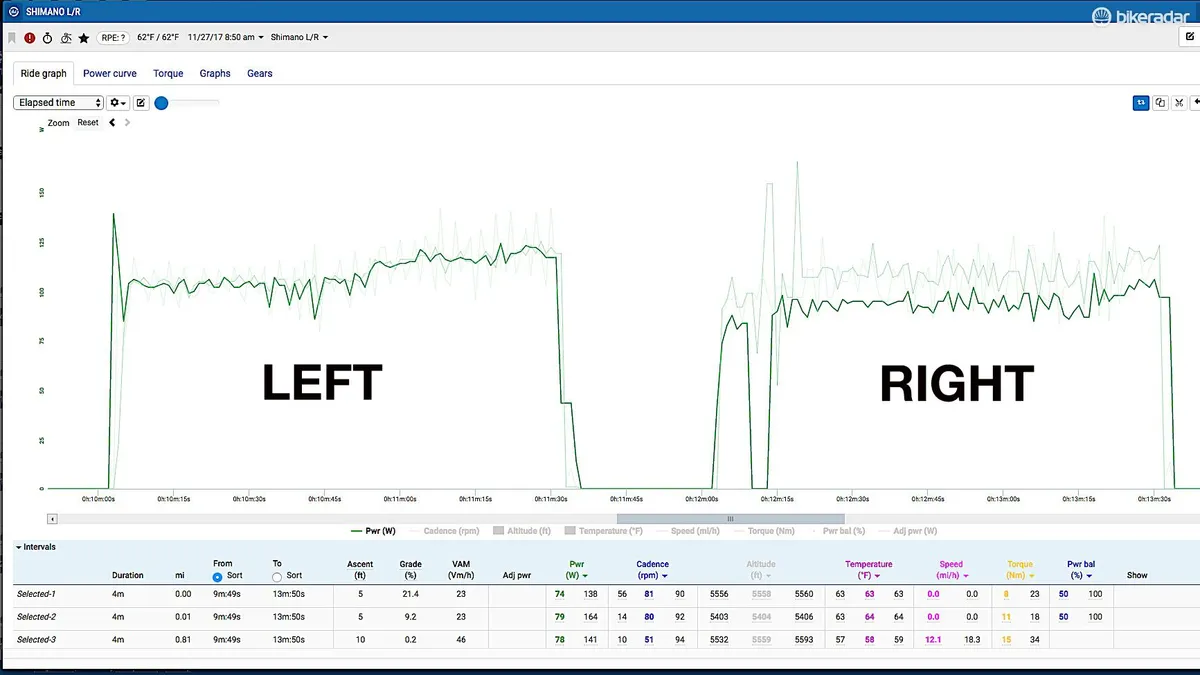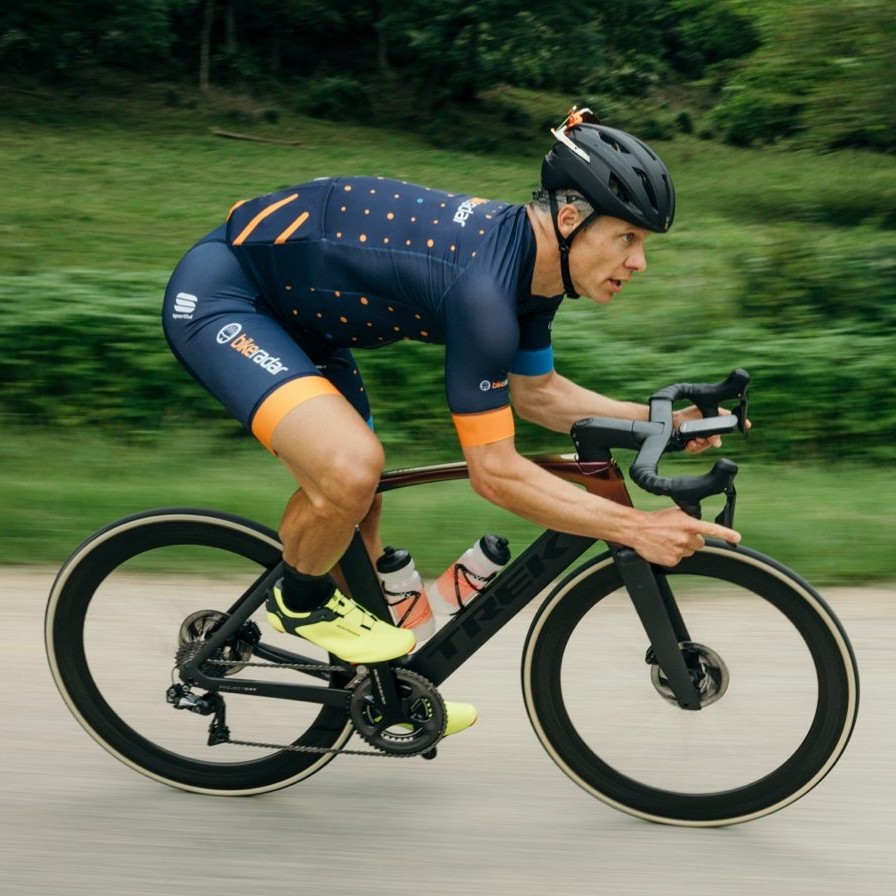Shimano’s first power meter, the Dura-Ace R9100-P, delivers consistent wattage readings as a whole, but the left/right readings are consistently imbalanced.
I tested two Shimano power meters in four configurations and the results were the same: the total number is very good compared to reliable meters, but the left reads higher than the right.
- 5 reasons to buy a power meter
- Garmin Vector 3 first ride review
- All BikeRadar power meter reviews and news
- Road bike groupsets: everything you need to know
The Shimano Dura-Ace Power Meter — accurate but flawed
R9100-P tested against other meters — one crank at a time
Checking power-meter accuracy is tricky, but what I do is run three meters simultaneously for weeks, recording on separate devices and overlaying the data for comparison.
Having used this protocol over the years, I’ve established trends among various meters.
PowerTap is very reliable, and a great comparative resource as it is hub-based. It tracks in parallel with SRM, another trusty stalwart. Recently, Garmin’s Vector 3 pedals have impressed me with their performance, judged against the old standards.
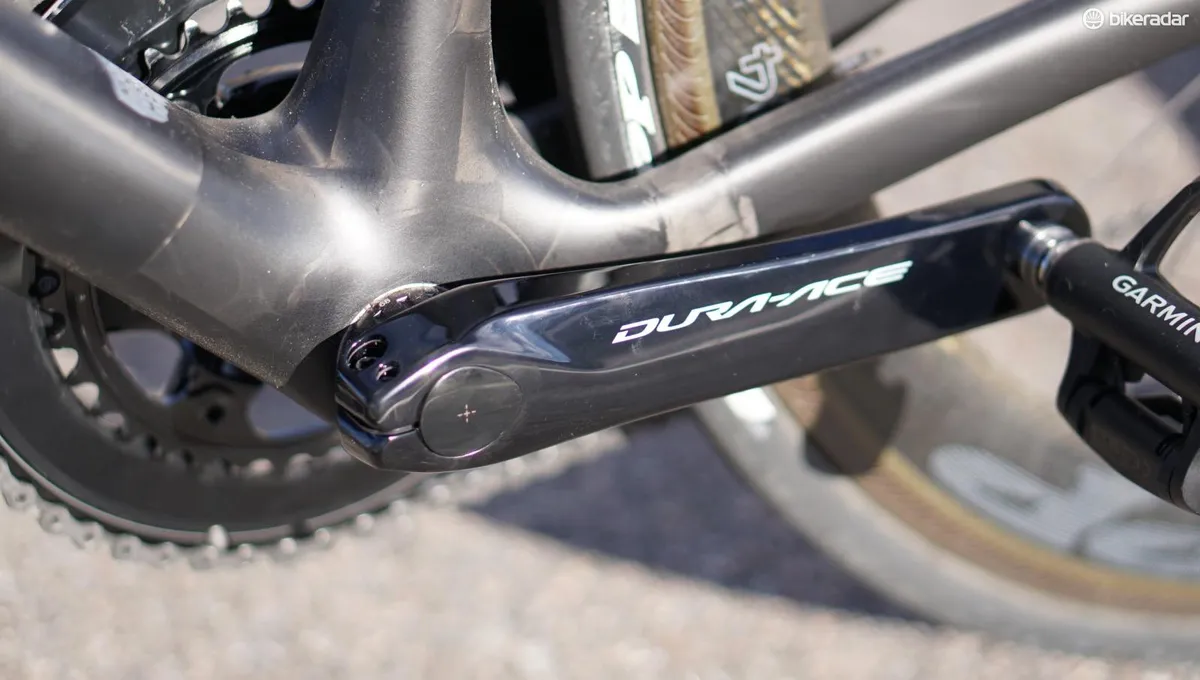
Shimano’s R9100-P, on my very first test, tracked within a single watt on average compared to the Vector 3s. And it proved to align so well in further testing with PowerTap and other trusted meters that I used it with the Vectors to test a slew of smart trainers.
But there was a catch — the left/right balance was slightly off; the ride averages were around 55/45 instead of my usual 50/50 to 52/48. Shimano initially blamed firmware. An update did not rectify that.
Closer inspection on my part (read: pedaling with just one leg, and then the other) revealed that the left crank read 5-10w high while the right read 5-10w low.
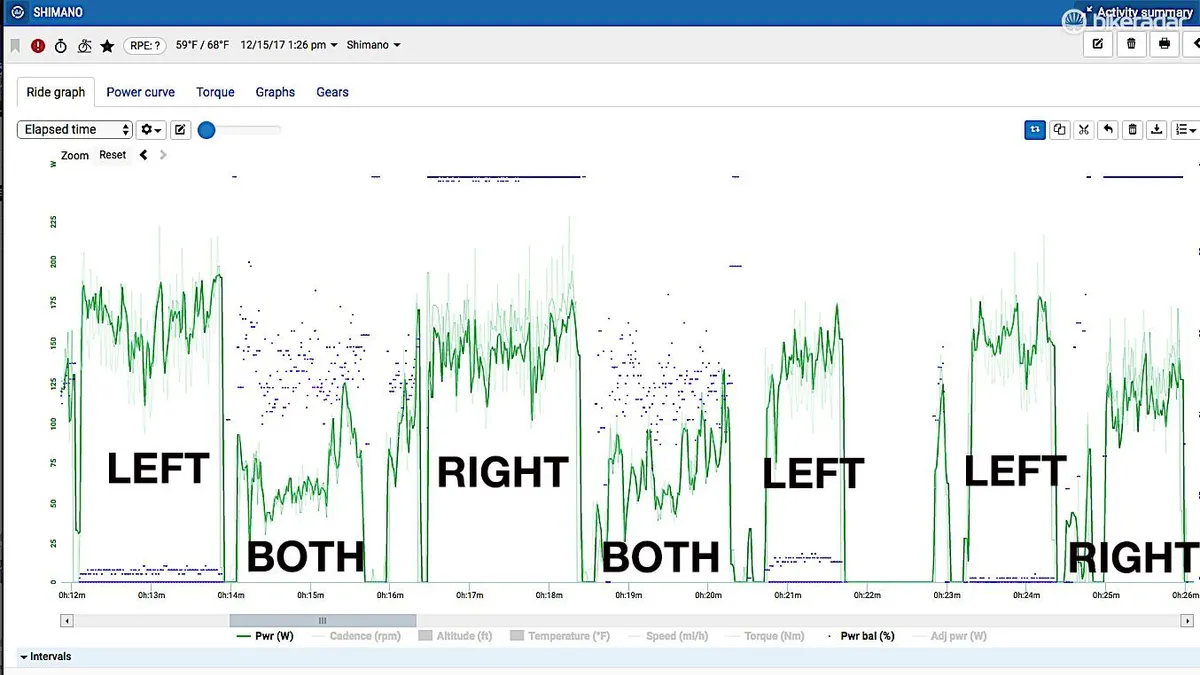
For example, single-leg pedaling on the road and on rollers would return averages of 155w on the Shimano, 150w for the Vector 3 and 150w for the PowerTap — while right-legged pedaling would show 145w for the Shimano right side, 150w for the Vector 3 right side and 150w for the PowerTap.
On average, though, the total number was solid.
I swapped in another R9100-P right crank and retested. Same story. Then I swapped in another left crank and retested. Again, same results.
Shimano shipped the first crank I tested back to Japan to check it and the calibration matched what Shimano had recorded when it first shipped it out.
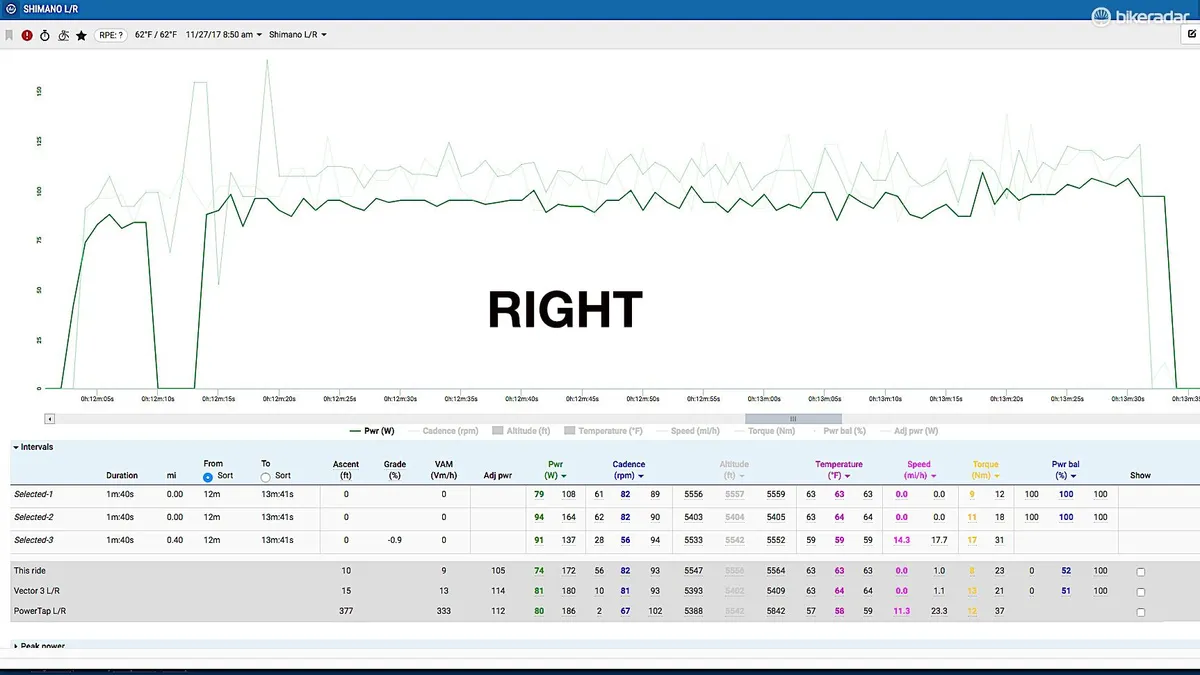
Shimano’s road product manager Dave Lawrence said both times the meter was within the expected tolerances.
“At the point, we don’t know what is causing that variance for you,” Lawrence said.
Regardless of the cause, the end result is plain: Shimano’s power meter is very consistent in its total readings, but its left/right measurement is not accurate. If you tried to use this meter to balance out your left/right output, you would be chasing your tail.
I have a few other nits to pick with the meter: temperature compensation is not good. Swings in temperature cause the meter to read 4–5w differently.
For instance, on a long weekend ride that started cold and then warmed up, the Shimano meter tracked well with two other meters for the morning. But after stopping for coffee and leaving the bike in the sun for 30 minutes, the Shimano readings were a few watts low and remained that way for the rest of the ride.
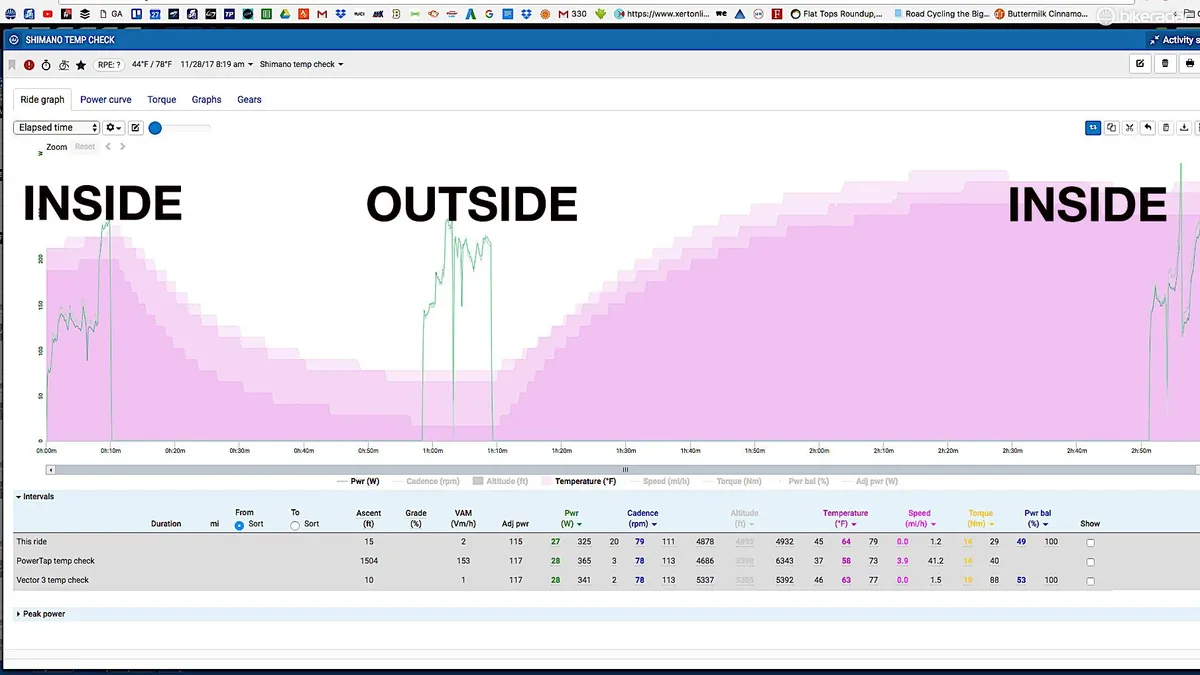
Doing quick temperature tests by riding inside then outside in near-freezing temps, and then back inside, confirmed this poor temperature-compensation behavior.
Unlike Pioneer or Vector meters, the Shimano meter offers no dissection of where in your stroke power is produced. Shimano has this capability with its Bikefitting.com hardware and software, but the Dura-Ace meter only measures left wattage and right wattage — and with a steady imbalance.
Shimano Dura-Ace R9100-P features
- ANT+ for data and Bluetooth for updates
- 300hr claimed life on battery that is recharged with magnetic cable
- Separate left/right measurement
- Crank sensors connect via a cable, so only one signal and one battery
- Claimed waterproof
- Claimed +/- 2% accuracy
- 53/39, 52/36 and 50/34t options
- 70g additional weight for any Dura-Ace crankset
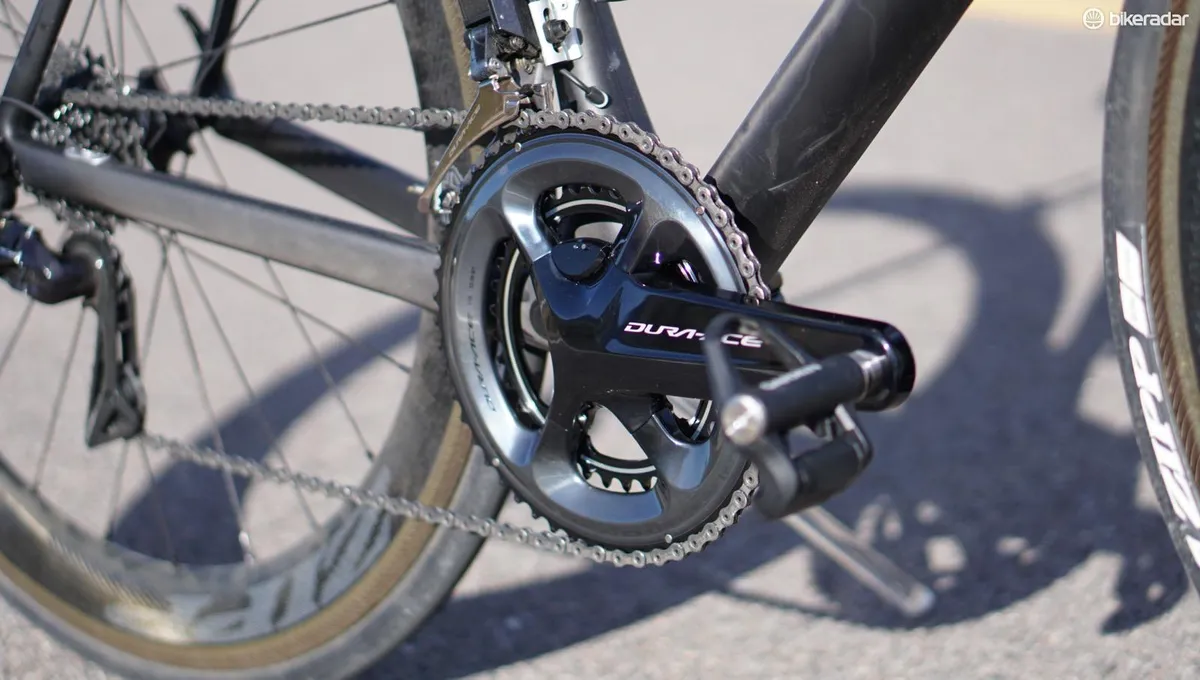
Shimano's Dura-Ace power meter adds 70g to a 9100 crankset
Construction details and secrets
Built into the same mold as the 9100 crank, the R9100-P is an alloy crankset with strain gauges installed on the inside of each arm. Shimano declines to specify anything about the strain gauges except to say the system is less sophisticated than the company's Bikefitting.com indoor analysis tool.
A few power meters measure left and right power separately, including options from Pioneer, 4iiii and Stages. But all of these send signals from one arm to the other, then to the head unit. Shimano's system is unique in that the two meters are hardwired together through the spindle, so only a single signal is sent.
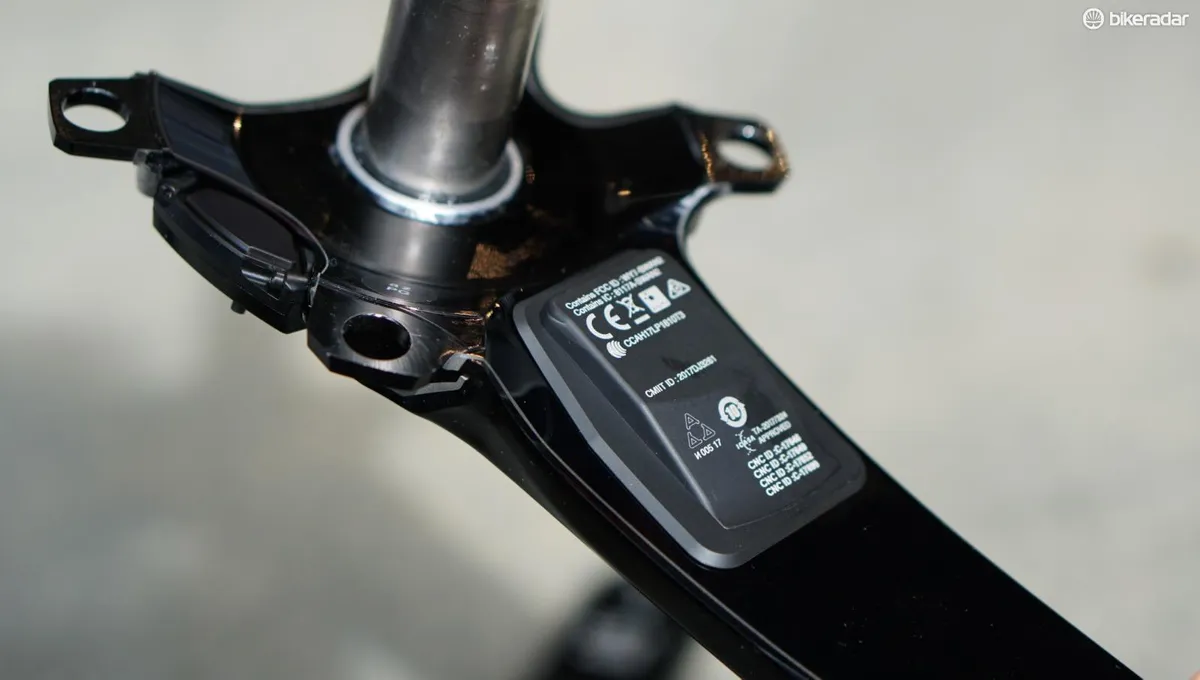
Similarly, the Shimano meter uses a single battery to power both arms. A magnetic cable connects to the meter underneath a plastic flap that pulls back, and a charge lasts a claimed 300 hours. The idea of the closed system is to completely seal out water.
What it does, and what it doesn't do
The Shimano meter measures power for each leg, and delivers the left/right data over ANT+ to any compatible head unit. Besides the wattage and left/right balance data, it also delivers efficiency and smoothness metrics.
What it doesn't do is show where in the pedal stroke power is produced — the way Garmin and Pioneer meters do (when paired with their respective head units). Shimano's Bikefitting.com system does offer this pedal-stroke analysis in 3D.
But, more annoyingly, what it doesn’t do — as described above — is measure the left and right cranks equally, so any left/right metrics can only be taken as a ballpark estimate, not a precise measurement.
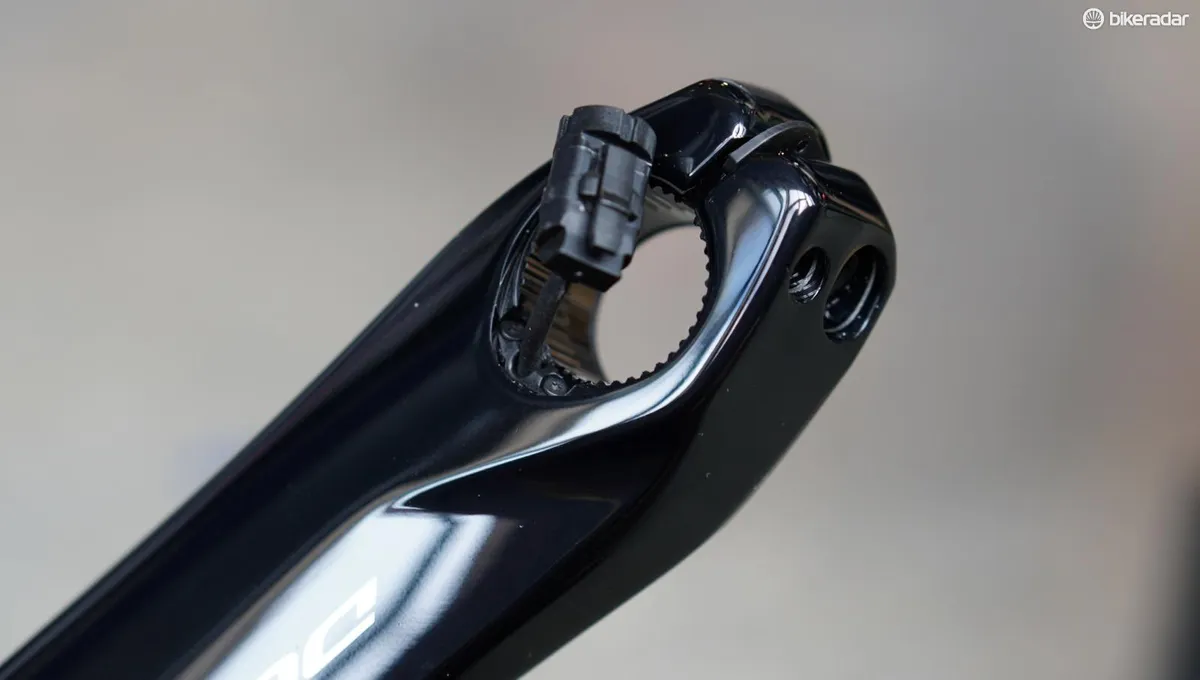
The Shimano meter pairs with the E-Tube app via Bluetooth, but it doesn't yet send power data to computers on Bluetooth. This is fairly standard for power meters and computers, with notable exceptions being Stages, which does both ANT+ and Bluetooth, and Look/Polar, which only does Bluetooth.
The R9100-P requires a magnet on the driveside of the frame, and it takes two full revolutions to wake up the meter from a stop or after coasting.
At a quick cadence, the Shimano meter would start reading as quickly as the Vector 3, but at a very slow cadence it took a split-second longer. Once pedaling there was no difference.
Bottom line: Shimano’s power meter delivers good overall data, but left/right measurement is imbalanced and temperature compensation is poor
Shimano has been making components for years, but the R9100-P is the Japanese giant’s first power meter.
When taken in sum, the wattage measurement is quite accurate compared to reliable meters tested in tandem.
The left/right measurement, however, is imbalanced, and renders any left/right data fairly useless.
This meter will be arriving stock on some 2018 bikes, including the Giant Propel SL Disc. Such customers can expect reliable total wattage data along with Shimano’s excellent overall crank performance. But those looking for accurate left/right data should wait for revisions or look elsewhere.
